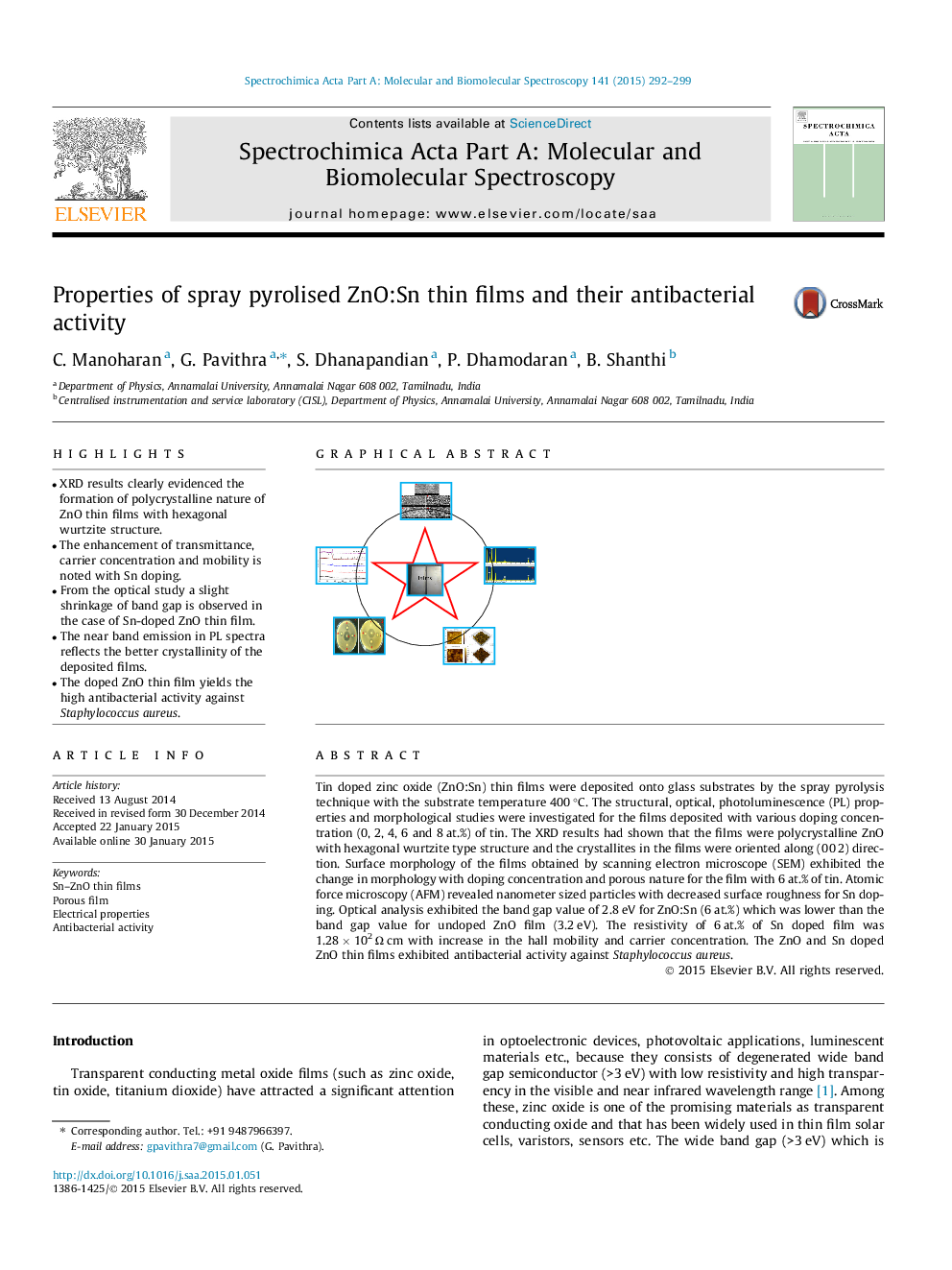| کد مقاله | کد نشریه | سال انتشار | مقاله انگلیسی | نسخه تمام متن |
|---|---|---|---|---|
| 1232417 | 1495228 | 2015 | 8 صفحه PDF | دانلود رایگان |

• XRD results clearly evidenced the formation of polycrystalline nature of ZnO thin films with hexagonal wurtzite structure.
• The enhancement of transmittance, carrier concentration and mobility is noted with Sn doping.
• From the optical study a slight shrinkage of band gap is observed in the case of Sn-doped ZnO thin film.
• The near band emission in PL spectra reflects the better crystallinity of the deposited films.
• The doped ZnO thin film yields the high antibacterial activity against Staphylococcus aureus.
Tin doped zinc oxide (ZnO:Sn) thin films were deposited onto glass substrates by the spray pyrolysis technique with the substrate temperature 400 °C. The structural, optical, photoluminescence (PL) properties and morphological studies were investigated for the films deposited with various doping concentration (0, 2, 4, 6 and 8 at.%) of tin. The XRD results had shown that the films were polycrystalline ZnO with hexagonal wurtzite type structure and the crystallites in the films were oriented along (0 0 2) direction. Surface morphology of the films obtained by scanning electron microscope (SEM) exhibited the change in morphology with doping concentration and porous nature for the film with 6 at.% of tin. Atomic force microscopy (AFM) revealed nanometer sized particles with decreased surface roughness for Sn doping. Optical analysis exhibited the band gap value of 2.8 eV for ZnO:Sn (6 at.%) which was lower than the band gap value for undoped ZnO film (3.2 eV). The resistivity of 6 at.% of Sn doped film was 1.28 × 102 Ω cm with increase in the hall mobility and carrier concentration. The ZnO and Sn doped ZnO thin films exhibited antibacterial activity against Staphylococcus aureus.
Figure optionsDownload as PowerPoint slide
Journal: Spectrochimica Acta Part A: Molecular and Biomolecular Spectroscopy - Volume 141, 15 April 2015, Pages 292–299